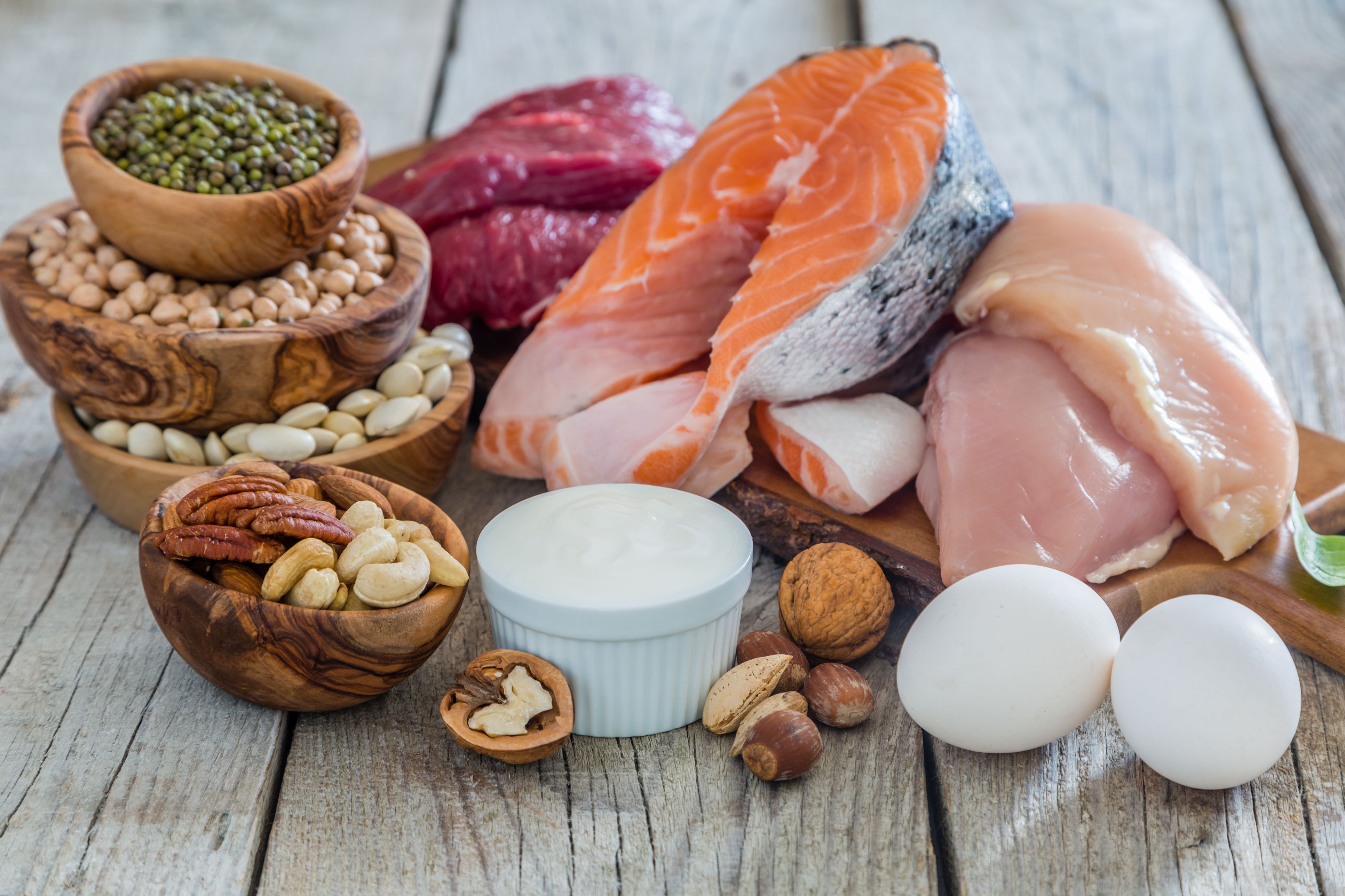To lose weight and sculpt a leaner body, what works is relatively simple – but it’s the plan that really gets results
Deputy Head of Education at Ultimate Performance, Jonathan Taylor has put together this helpful seven-step plan that can help you build a complete body transformation. Taylor is also the author of the book Body Transformation Meal Plan Design.
1. Establish Your Starting Point
The first step in setting up a body transformation diet is to get a clear idea of your starting point. To do this, you need to complete a comprehensive body composition assessment.
The assessment involves:
- Recording your bodyweight (upon waking)
- Measuring your navel and hip circumferences
- Taking progress pictures (front, back and side)
- Estimating your body fat percentage (search online for ‘Navy body fat calculator’)
Make sure to complete the assessment before starting, because you will need the results to create your meal plan.
2. Set a Goal and Plan
It is recommended putting aside 12 weeks to complete your transformation.
This is the longest time the majority of people can commit to before needing a break. An unavoidable truth about transformation programs is that they require a level of discipline and attention to detail that many of your friends, family and colleagues may struggle to understand.
You can sustain a highly-focused approach for a relatively short period, but not indefinitely. Nobody is a robot.
When scheduling your transformation, we strongly recommend aligning your start and end dates with a specific occasion where you want to look your best.
Without a clear start and end date, most dieters struggle to stay motivated and ultimately never achieve their goals.
Some obvious dates to target:
- Holidays
- Birthdays
- Weddings
- Photoshoot
3. Recruit a Diet Partner
A key part of a transformation journey is the daily contact (in person and online) with their PT and the accountability this provides.
You can recreate this for yourself by asking a friend or family member to be your diet partner. This can be somebody who wants to diet at the same time or who is just willing to keep you accountable.
At the end of each day, message your diet partner with the following information:
- Morning bodyweight, e.g. 70kg
- Daily step total, e.g. 10,000 steps
- Training summary, e.g. upper body workout
- Food diary
4. Factor in Training and Physical Activity
The focus of this guide is on diet, but we cannot ignore the important contribution that training and regular physical activity make in transforming your body composition.
Lift weights: Train three to four times a week. Resistance training (in combination with a high-protein diet) maintains or even increases muscle mass during periods of caloric restriction.
Keep active: From a calorie-burning perspective, how physically active you are outside of the gym can have a real impact on your fat loss efforts. Aim for a minimum average step target of 10,000 steps.
Add in cardio: We recommend performing 1-2 interval based cardio workouts per week (doing too much can interfere with your resistance training).
5. Calculate Nutrition Targets
Now that you have planned your transformation, the next step is to calculate the nutrition targets that you will use to create your meal plan.
In our book Body Transformation Meal Plan Design, we break this down into three steps:
Step 1: Estimate Maintenance
Your maintenance calorie intake is the number of calories you need to consume to maintain your current bodyweight.
To estimate your maintenance calorie intake:
- Estimate your resting metabolic rate (RMR) (how many calories your body burns at rest). We explain this step-by-step in the book, but a quick trick is to multiply your bodyweight (in pounds) by 10
- Multiply your RMR estimate by ‘x 1.5’ to factor in the energy you expend performing various physical activities each day
Step 2: Set Calorie Target
We’ll keep it simple here and deduct 500kcal from your maintenance estimate, e.g. 3,000kcal – 500kcal = 2,500kcal.
Step 3: Set Macronutrient Targets
Macronutrients are types of nutrients that your body needs in large amounts, and you may well be familiar with the three main types: protein, fat and carbohydrate.
Protein Targets:
We set protein intake first as it is arguably the most important macronutrient for body composition, due to its hunger-suppressing and muscle building ability.
A good starting point is 1g protein per pound of bodyweight, e.g. if you weigh 150lb, aim for 150g protein.
Fat and Carbohydrate Targets:
The primary roles of fat and carbohydrate are to provide energy, so it makes sense to scale them to your total calorie (energy) intake.
Set your fat target somewhere between 25-45% of your total calories and allocate the remaining calories to carbohydrate.
6. Write Your Meal Plan
Here’s a summary of how to write a meal plan:
- Invest in a digital food scale (for measuring serving sizes) and download MyFitnessPal (to keep a detailed record of your food intake)
- Select a meal frequency (3-4 works best for most clients) and schedule regular meal times
- Aim for a 20-50g serving of protein per meal
- There are no specific timing requirements for dietary fats, so add them to your meal plan based on personal preference
- Fill half your plate with non-starchy vegetables at every meal and include 1-2 servings of fruit per day
- Include starchy vegetables and grains to help meet the remainder of your carbohydrate target
- Aim for at least 2 litres of fluids per day (black coffee and green/fruit teas count)
- At the start of each week, adapt your meal plan to account for any social or work meals out
7. Track Your Progress and Make Changes (If Needed)
You may need to adjust your targets in the early stages of your diet to either start seeing progress or increase the rate of progress.
We recommend scheduling time at the end of each week to evaluate your progress and see if any changes are needed.
We use changes in bodyweight as the main measure of progress and the aim is to lose on average between 0.5-1% of your total bodyweight per week.
- If you are below target (average bodyweight drops by less than 0.5%) but were on or above target the previous week, do not make any changes
- If you are below target for two consecutive weeks, reduce calorie intake by 10%
- Continue to reassess every at the end of each week
Read more from JOE’s Ditch the Dad Bod series












































